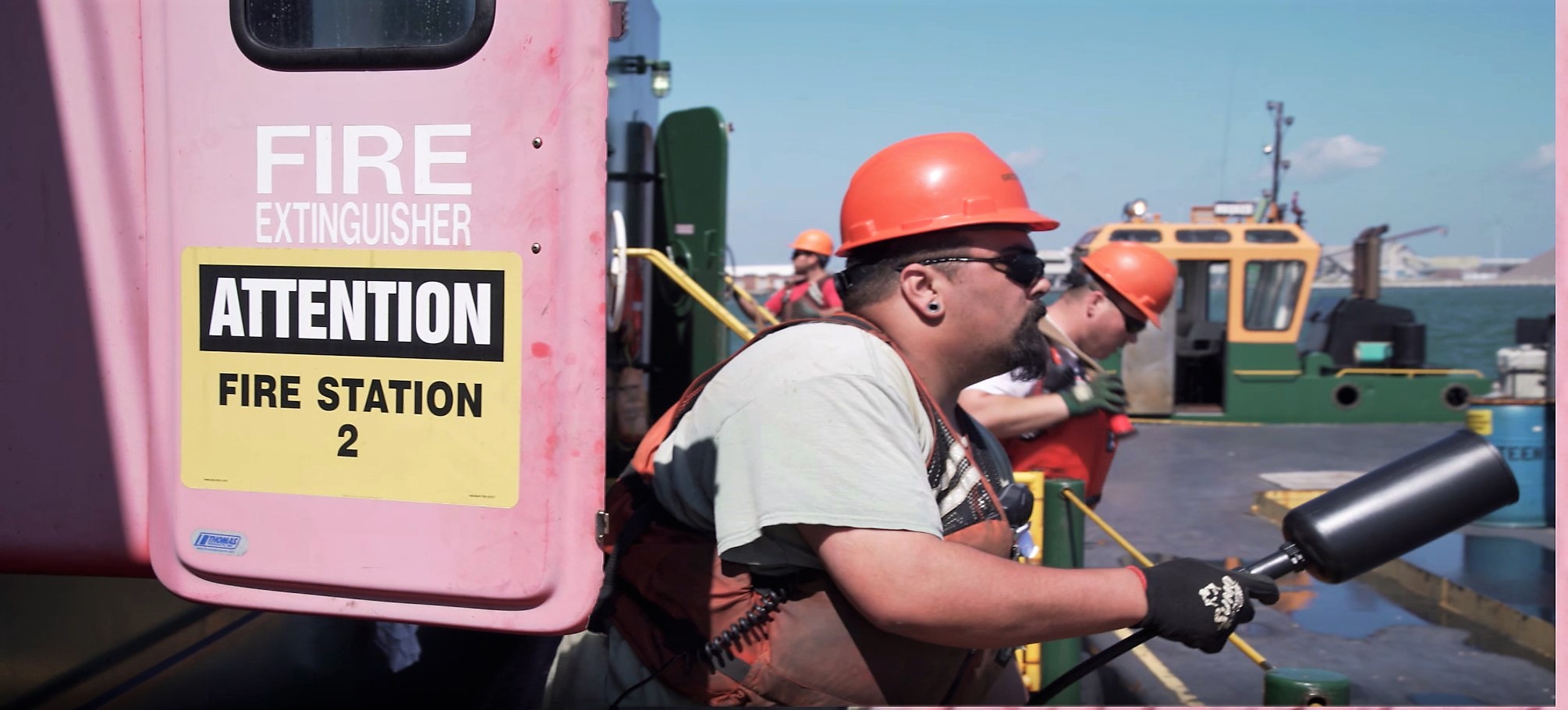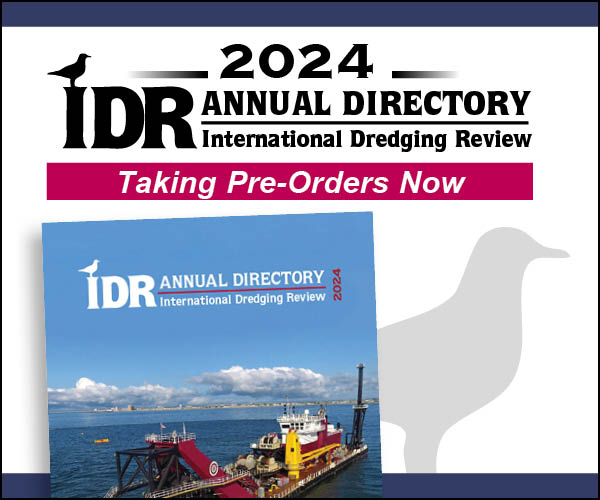The Council for Dredging and Marine Construction Safety (CDMCS), the nation’s dredging and marine construction safety council and formal partnership between United States dredging contractors and the United States Army Corps of Engineers, is celebrating 10 years of progress in safety and occupational health leadership. April 10 marked the date that three organizations – Dredging Contractors of America (DCA), the Corps, and the Associated General Contractors of America (AGC) – came together to officially launch what would quickly become the unified voice for industry safety. In those 10 years plenty of progress has taken place, according to its management team comprising Devon Carlock of Cottrell Contracting, Michael Gerhardt of DCA and Albert Wong from Corps Headquarters.

Partnership Between Government and Industry
CDMCS was born out of the positive working relationship and energy that had been created by the Dredging Safety Management Program (DSMP), a dredge plant certification program jointly managed by DCA and the Corps. When the DSMP was dissolved in 2008, the CDMCS leaped forward immediately, working hand-in-glove with its federal partners at the Naval Facilities Engineering Command (NAVFAC), Occupational Safety and Health Administration (OSHA) and the Corps on updating and improving specific language in the Corps Safety Manual EM385-1-1 and the Unified Facilities Guidance Specification (UFGS), related to Site Safety and Health Officer (SSHO) training and experience, survey swimming and crane operations.
The council quickly began to broaden its base, producing a suite of safety resource material and tracking regulatory changes in occupational safety and health. Walls began to break down as corporate safety directors throughout the industry began to use this peer-to-peer forum for exchanging information on good catches and lessons learned, as well as for sharing in-house safety policies and procedures.
“Safety culture in the industry was changing, and CDMCS was there to promote and sustain it on a national level. The contractors who spearheaded this endeavor in its early days had a vision of a group that would promote the dredging industry as a world-class leader in safety and resolve key issues,” Gerhardt said.
In all its actions, CDMCS is committed to its vision of creating a 100 percent injury-free workplace for the dredging and marine construction industry by embracing its core values of teamwork, trust and transparency and sticking to its mission of raising the industry’s safety standards and building a safety-first culture in collaboration with the Corps. Gerhardt emphasizes that members believe that they are stronger together, that they must empower but also be held accountable, and that they must share information to save lives.

Safety is a shared responsibility. To that end, CDMCS members submit quarterly safety statistics, detailing the nature of injuries and the body parts impacted. This information reveals incident and injury trends that drive the council’s activities. For example, statistical analyses objectively revealed that hand injuries are the second most common injury, while working on dredging and support vessels, only surpassed by back and soft tissue injuries. CDMCS’s response was the creation of a comprehensive training video on hand safety awareness and hazard prevention, which has already been widely incorporated into safety management training programs across the country. See the article in the IDR January/February 2018 issue, page 24.
CDMCS has also produced a collection of documents entitled, “The Good Catch Series,” designed to remind on-site employees to be proactive about safety and take appropriate precautions to prevent serious injuries. In conjunction with job site safety posters and toolbox topics, this new resource expands the CDMCS archive of member benefits and builds out its new website.
“Best practices in safety are indeed scalable to companies of all sizes,” said Co-Chair Devon Carlock, who has made it a priority from day one to present new ideas, technology and safety procedures, which were successfully implemented at Cottrell Contracting to a broad group of large, medium and small contractors for consideration and implementation. The use of unmanned aerial vehicles, radio frequency identification (RFID) locate sensors, and improved hand, face and head protection have all been demonstrated and discussed at CDMCS quarterly meetings.
Carlock pointed out, “Having the forum to discuss seasonal weather restrictions and hazards, SSHO qualifications, and a multitude of other topics with Corps leadership has been an invaluable resource for Cottrell and fellow CDMCS members.”
Future Council Actions
During this year the council intends to focus on fatigue management, ergonomics, and drug and alcohol abuse. They are also ready to partner with the Corps on the next rewrite of the EM385-1-1 Safety Manual, a process that occurs approximately once every five years.
Most importantly, however, CDMCS members are seeking dramatic and meaningful improvements to the lack of accurate underwater pipeline and utility documentation available to contractors working on Corps dredging projects, the seriousness of which was underscored by the recent natural gas pipeline strike near Port O’Connor, Texas, on April 17. See the story on this page.
The Corps, the Coast Guard, the Pipeline and Hazardous Materials Safety Administration, part of the Department of Transportation (PHMSA-DOT), GulfSafe, and the Coastal and Marine Operators (CAMO) attended the next CDMCS quarterly meeting on May 16 in Washington, D.C. to discuss a path forward for better coordination and proper documentation of existing and future lines. Participation from the American Waterways Operators and the American National Standards Institute (ANSI) rounded out the agenda.
In addition, the council has announced that it will begin annual awards recognizing individuals and companies for displaying exemplary leadership in safety. Recipients of the CDMCS Leadership in Safety Awards will be honored at the Annual CDMCS Safety Awards Dinner in the fall of 2018.
To learn more about CDMCS, visit CDMCS.org and stop by their booth (#78) at the Western Dredging Association (WEDA) Dredging Summit and Expo this June in Norfolk, Virginia.




